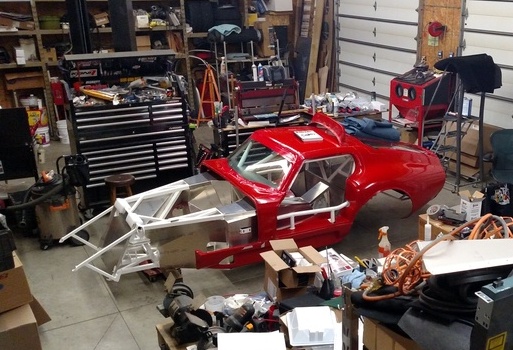
Karen Salvaggio of Thunder Valley Racing is no stranger to building and racing Factory Five Racing MK4 Roadsters and Type 65 Daytona Coupes.
So when Factory Five wanted to beta test the race-ready ‘R’ version of the Gen 3 Daytona Coupe, she got one of the first kits—#002, in fact.
The Daytona Coupe-R represents the first racing version of a Daytona produced by any manufacturer. The original Coupe was the first and only American race car to beat Ferrari in a FIA World Championship, doing the deed in 1965. Carroll Shelby, designer Pete Brock, and other Shelby American team members talk about the car in this Road and Track story.
Salvaggio is somewhat of a trendsetter when it comes to Factory Five Daytona Coupes. When the first generation launched, it was considered a street driver, not a race car. It had no roll cage, no accommodations for a fuel cell, nor door protection, and required extensive modifications to the engine compartment and chassis to fit a Ford 5.0L Coyote engine.
Additionally, the car was designed with a very low roofline, narrow foot box and driver’s compartment, and was criticized for not having the correct profile. But that didn’t stop Salvaggio from modifying the Daytona Coupe for racing.
“There were other Coupe owners who thought we could race these cars, so we developed the plans and jigs for a Club Code Regulation (CCR)-compliant Daytona Coupe,” she said. “We scaled and fabricated the roll cage, fuel cell safety system, and all of the required safety features so the FFR Coupes could be run in both Sports Car Club of America (SCCA) and National Auto Sport Association (NASA) competition. Over the last five years, I am pleased to say there are numerous Gen 1 and Gen 2 Coupes that have been modified for racing.”
Factory Five Racing debuted the Gen 3 Coupe and announced plans for its first Coupe-R at the 2016 SEMA Show. FFR owner Dave Smith selected five beta builders for the new Coupes—three street versions and two R-models. Salvaggio received R-model chassis #002.
The plan was to build the car to campaign at vintage racing events and high-profile events like the Optima Battery Challenge and Ultimate Street Car competition. Salvaggio chose well-known Cobra builder David Pohli to help with initial assembly of the Gen 3. Work done at Pohli’s shop included installing the suspension system, plumbing the fuel system, installing the brakes, dropping in the engine and transmission, and fitting the sheet metal panels.
Salvaggio and Pohli went the Coyote route with a Ford Performance 435-horsepower crate engine and controller. A Ford Performance Tremec T-56 six-speed with a Ford Performance clutch and a Quick Time bellhousing transfers power back to an IRS with a 3.73-geared 2015 Mustang differential.
The original plan called for a dry sump oiling system, but the estimated $7,000 price tag led to Plan B.
They went with a wet sump system based on a Moroso Road Race oil pan and matching pickup. They plumbed a Mishimoto oil cooler and Moroso remote oil filter using Summit Racing -8 AN hose and fittings.
The Factory Five Gen 3 kit comes with Mustang GT front disc brakes with twin piston calipers and 13-inch rear discs with Wilwood four-piston calipers. Salvaggio and Pohli replaced the fronts with Wilwood Superlite 6 six-piston calipers, 13-inch Bendix rotors, and Hawk DTC 70 pads.
The Gen 3 also comes with a 15:1 manual rack and pinion steering setup. Salvaggio prefers power steering, so she swapped to a power rack with a KRC power steering pump, reservoir, and pump flow control fitting.
When the first stage of the project was completed, Salvaggio took the car to Very Cool Parts in Enterprise, AL. Shop owner Wayne Presley and Salvaggio installed the wiring and electrical system, plumbed the brakes, and fit the doors and hood. The Daytona then went to Wiggins Kustumz for paint in in Guardsman Blue and Wimbeldon White, just like the original car.
From Alabama, the Daytona headed back to Salvaggio’s Southern California home. She and friend TC McNett installed the seats, Schroth race harness, Stroud fire-suppression system, and window nets. From there, Salvaggio and the Gen 3 went to Nevada where master race car builders Rupert Bragg-Smith and Farra Snook fine-tuned the brake system and got the car ready for the track.
The Daytona Coupe was issued a race log book by NASA in May 2017, and made its competition debut at the 17th Annual Spokane Festival of Speed in Spokane, WA. So how did that first race go?
“As with any new build, we had a few teething pains,” Salvaggio said. “We ran in the Big Bore group against some wicked fast machines, and consistently finished in the top five. The vintage racing world was truly thrilled to have a Daytona Coupe on track, in full race trim, competing hard at the front of the pack!”
She will continue to compete in vintage race events with the Society of Vintage Racing Enthusiasts (SOVREN) in the Pacific Northwest, and the Vintage Auto Racing Association (VARA), which runs events in the California, Arizona, and Nevada.
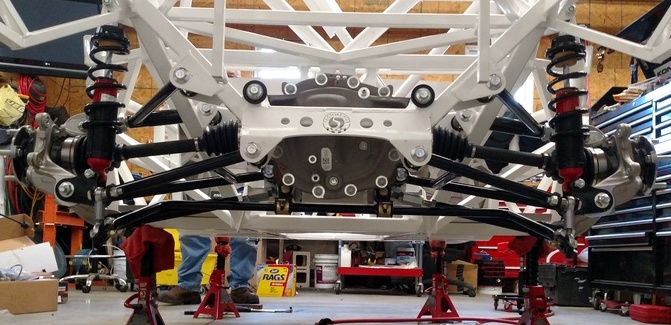
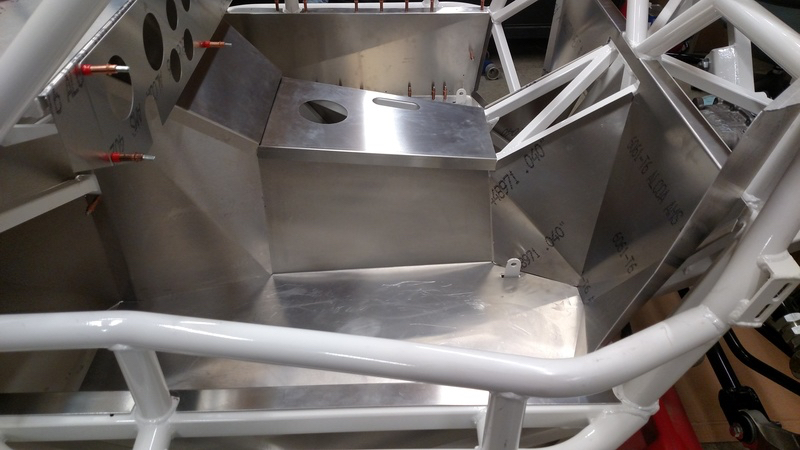
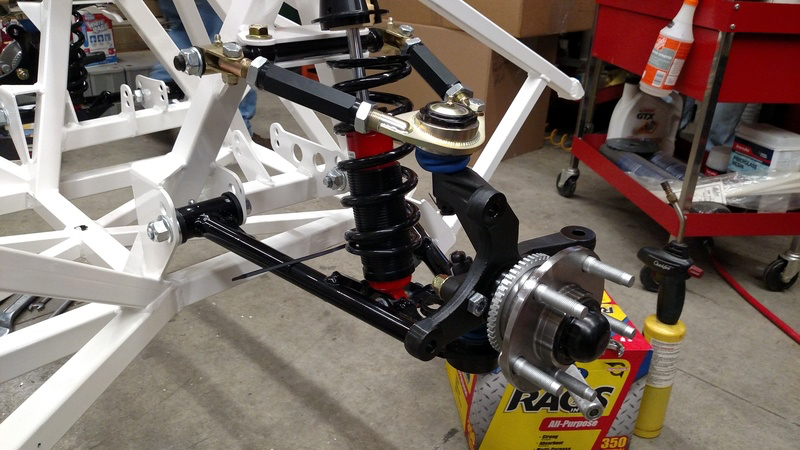
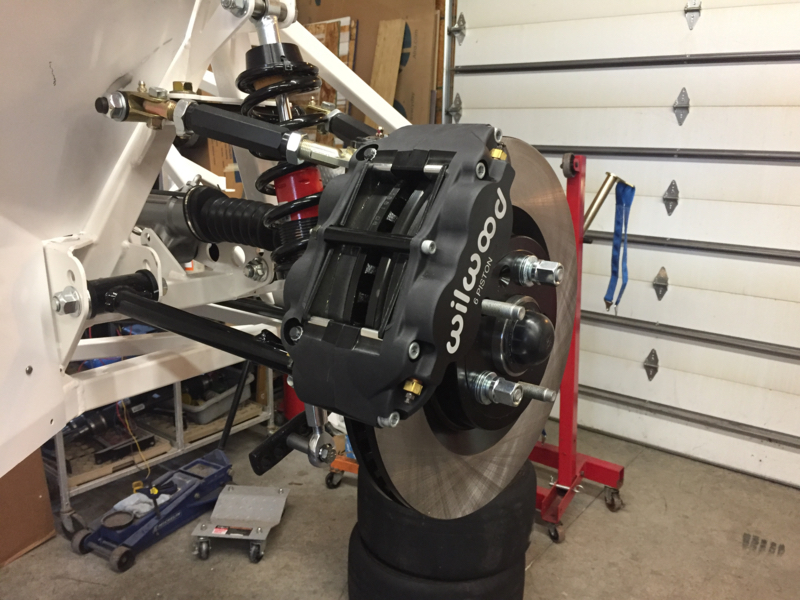
Want Your Own Gen 3 Daytona Coupe?
Sure you do.
Find Thunder Valley Factory Five Gen 3 Daytona Parts Combos here from Summit Racing.
For more detailed information on the Gen 3 kits, read more from Factory Five Racing.
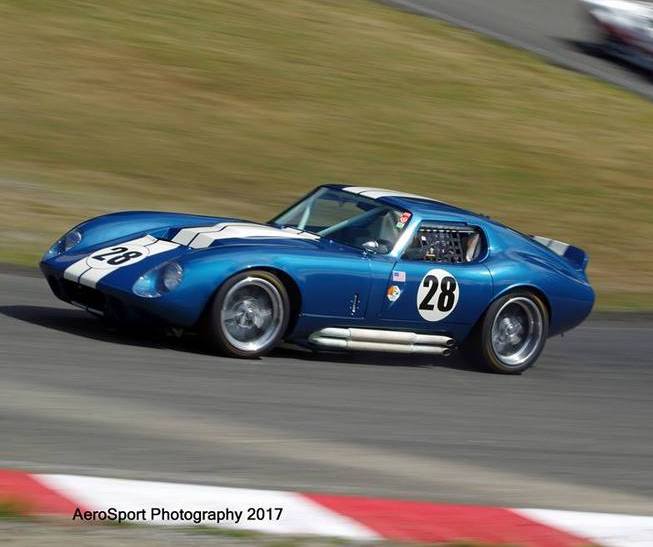
For even more reading on the street and race versions of Factory Five’s Gen 3 Daytona Coupe, see these articles from Hot Rod magazine:

BONJOUR JE VOUDRAIS SAVOIR LES DIMENTION DU CONPARTIMENT MOTEUR HAUTEUR LES LARGEUR AVENT EST ARRIERE POUR SAVOIR CI JE PEUX METRE UN MOTEUR V8 XJ8JAGUAR QUE JE POSEDE DEJA POUR UN KIT COUPER DAYTONA 65 MERCI DAVENCE
Bonjour je voudrais savoir les dimensions du compartiment moteur. Je souhaiterais connaître les largeurs et la hauteur
avant et arrière. Ceci dans le but de savoir si je peux installer un moteur V8 X J8 JAGUAR, que je possède déjà pour un
kit Daytona 65.
Merci de votre réponse
Salutations